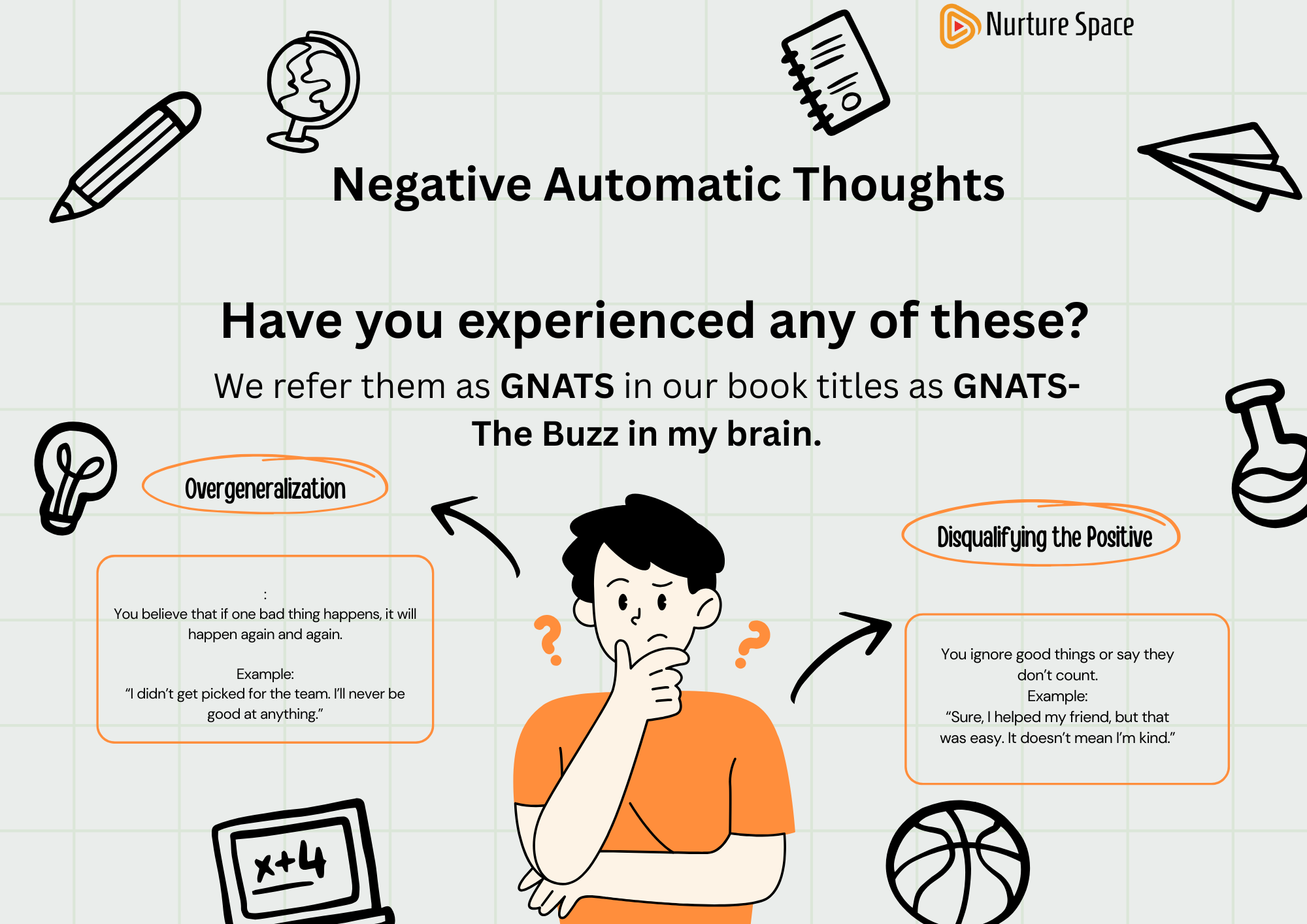Negative Automatic Thoughts (NATs) are quick, involuntary, and often unhelpful thoughts that arise in response to everyday situations. They are called “automatic” because they pop up spontaneously in our minds without conscious effort. These thoughts are usually negative, distorted, and self-defeating, and they often reflect deeply rooted beliefs about oneself, others, or the world.
What Do NATs Do?
NATs influence how we feel and behave. When we have negative automatic thoughts, they can trigger emotions such as sadness, anxiety, guilt, or anger, and can lead to unhelpful behaviors like avoidance, withdrawal, or aggression. Over time, repeated exposure to these thoughts can contribute to mental health issues like depression, anxiety disorders, and low self-esteem.
Types of Negative Automatic Thoughts:
- Catastrophizing – Imagining the worst possible outcome (“If I fail this test, my life is over”).
- Overgeneralization – Drawing broad conclusions from a single event (“I failed once, so I’ll always fail”).
- All-or-Nothing Thinking – Seeing things in black-and-white terms (“If I’m not perfect, I’m a failure”).
- Mind Reading – Assuming you know what others are thinking (“She thinks I’m stupid”).
- Fortune Telling – Predicting the future negatively (“I just know I’ll mess this up”).
- Labeling – Assigning negative labels to oneself or others (“I’m useless”).
- Personalization – Blaming yourself for things out of your control (“It’s my fault they’re upset”).
- Mental Filtering – Focusing only on the negatives and ignoring positives (“I got one bad comment, so I must be doing terribly”).
- Disqualifying the Positive – Rejecting positive experiences (“They’re just being nice—they don’t really mean it”).
- Emotional Reasoning – Believing that feelings reflect facts (“I feel anxious, so something bad must be happening”).



